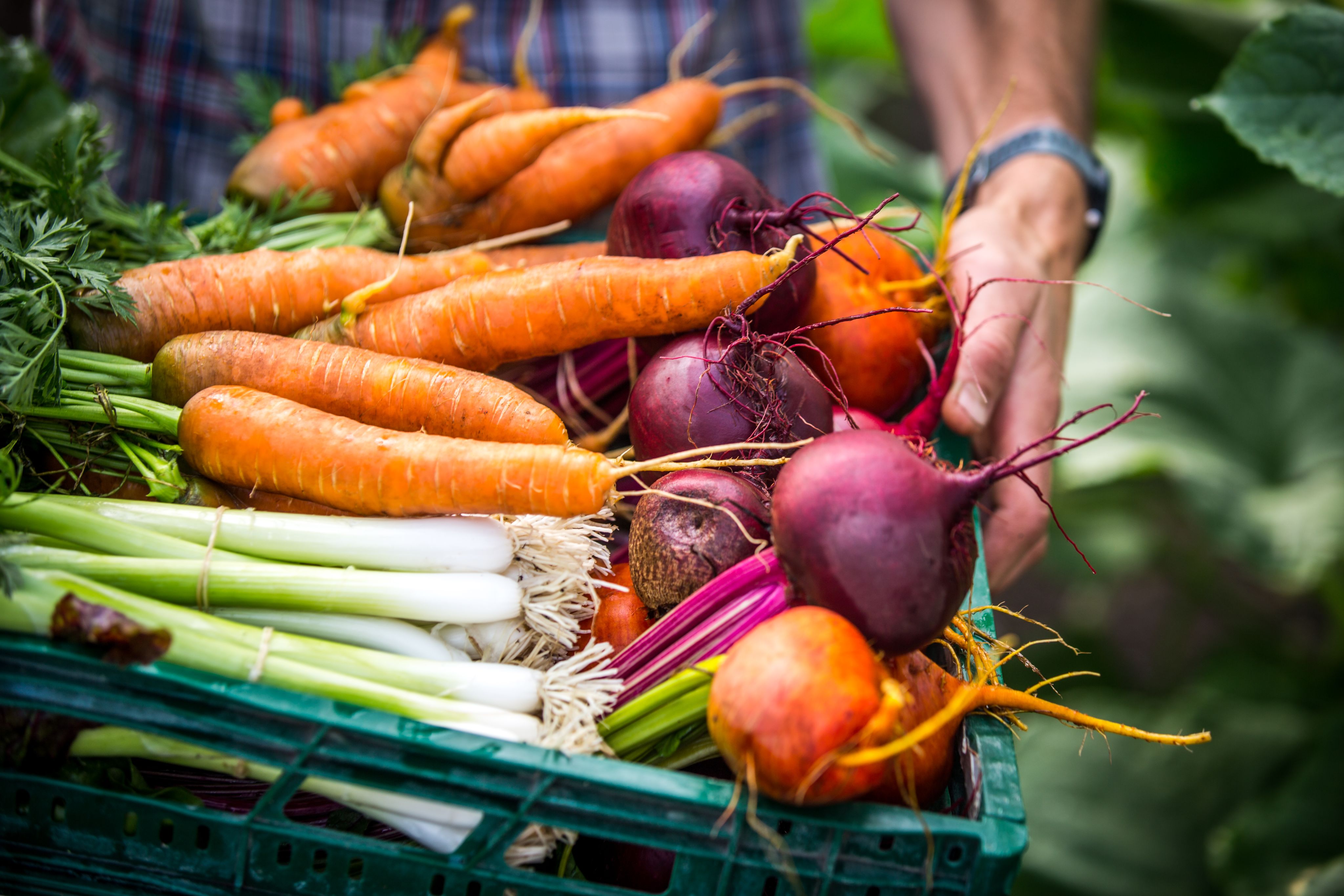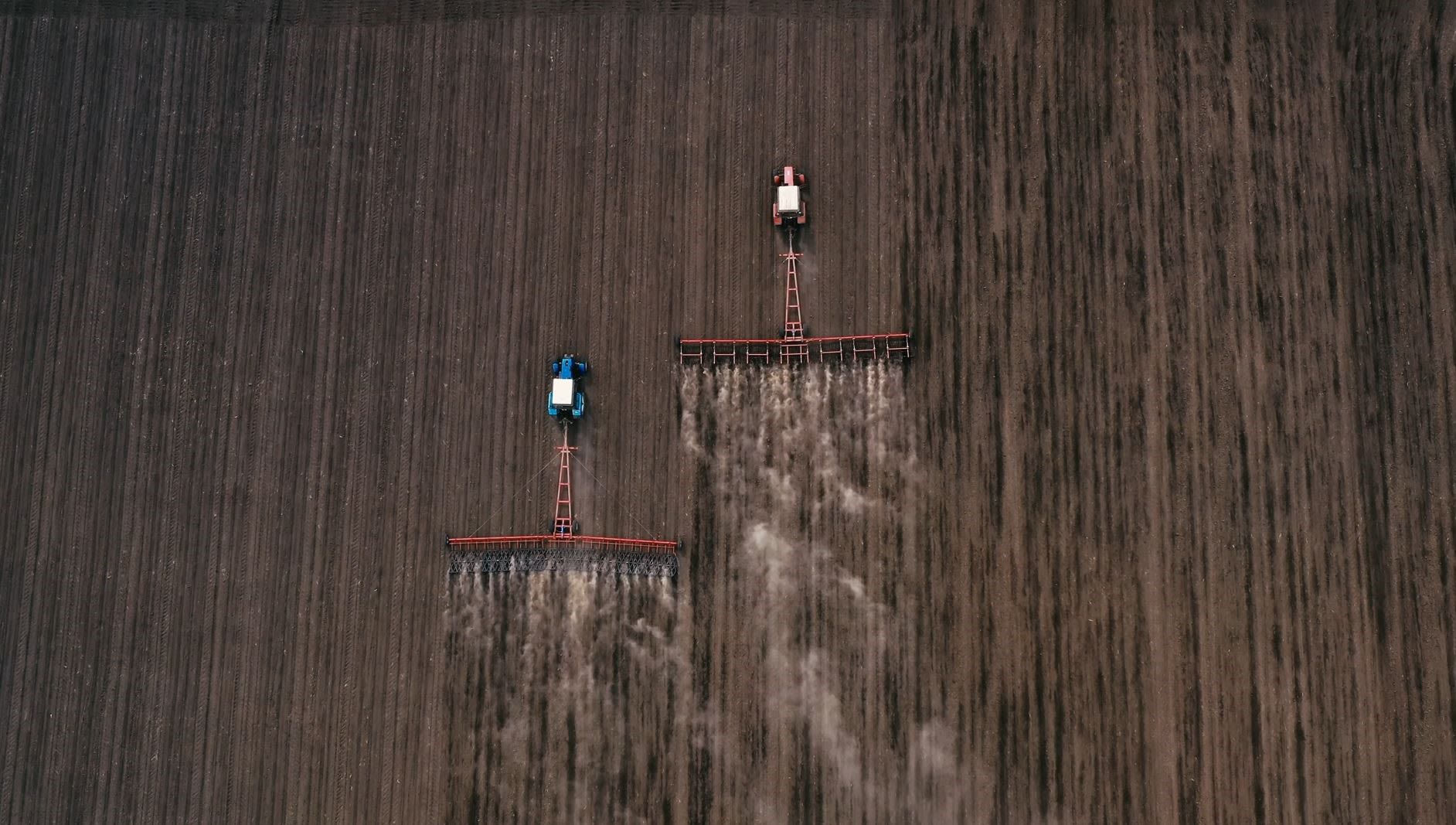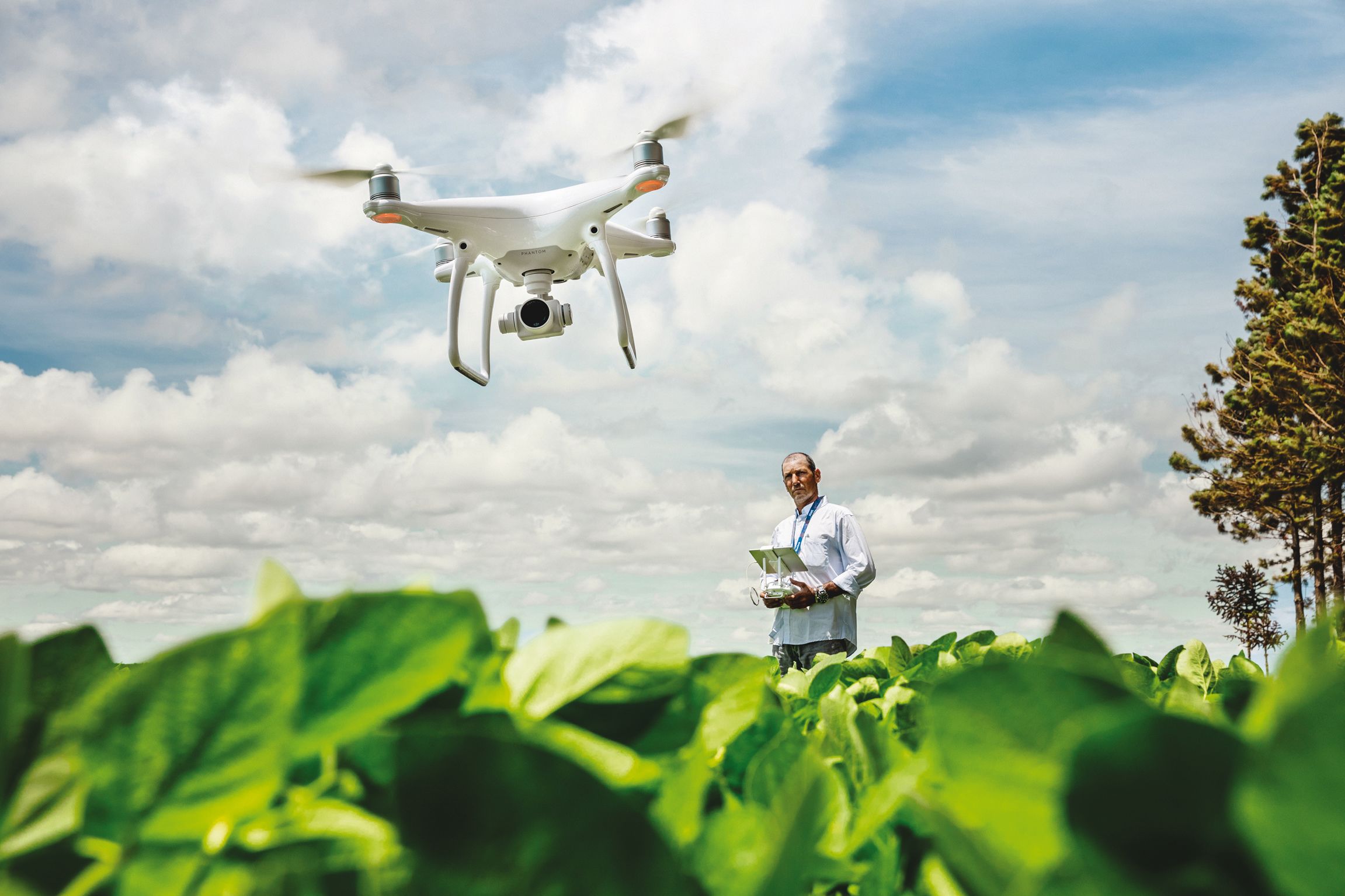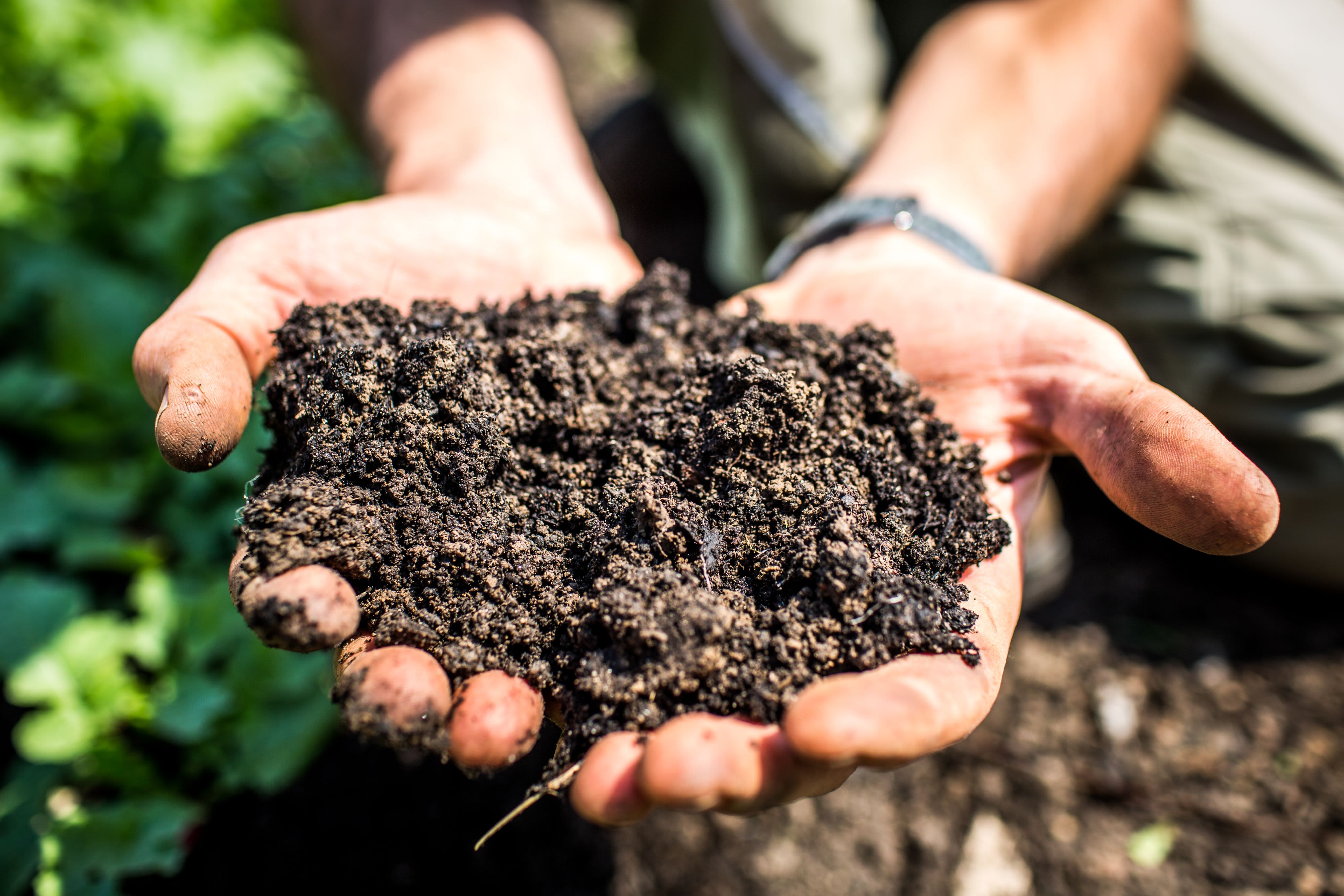SAVE OUR SOILS
To protect the planet's soils from collapse
– and thus ourselves –
we must radically change the way we farm
by Marius Münstermann
photos & videos Christian Werner
illustrations Erik Tuckow

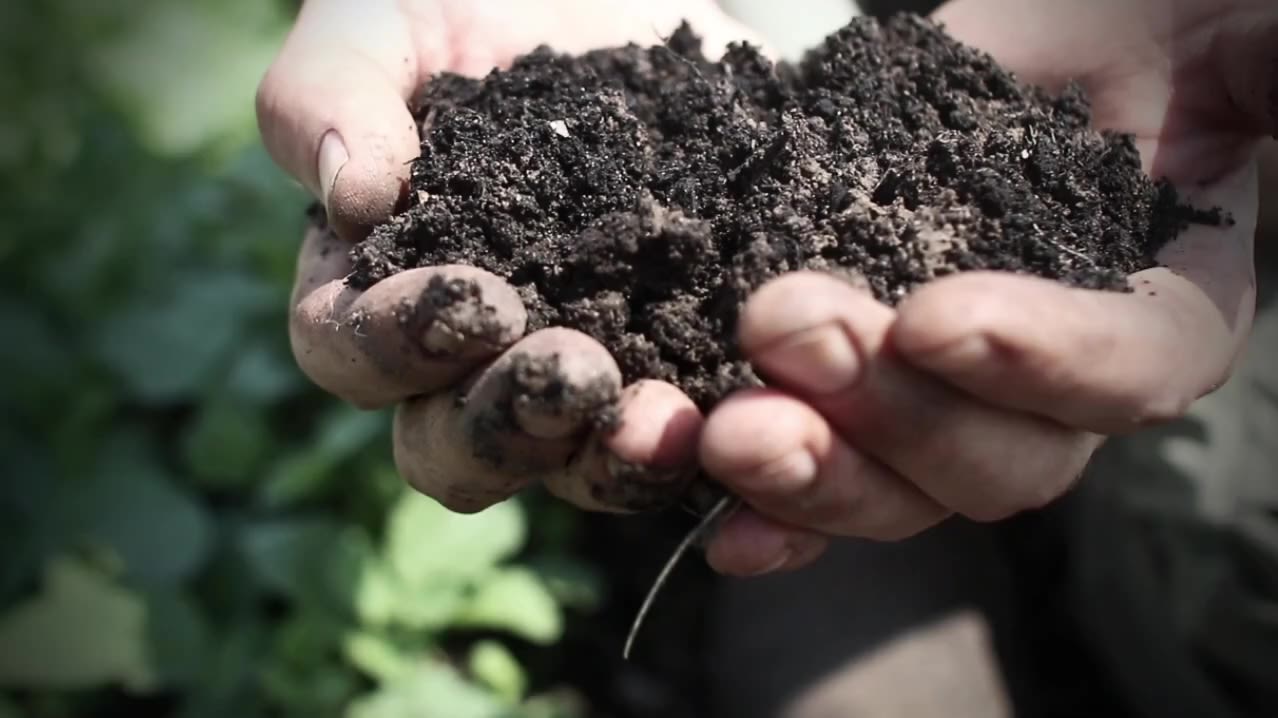
Chapter IV
Regenerated
„While the farmer holds the title to the land, actually, it belongs to all the people
because civilization itself rests upon the soil.“
Thomas Jefferson
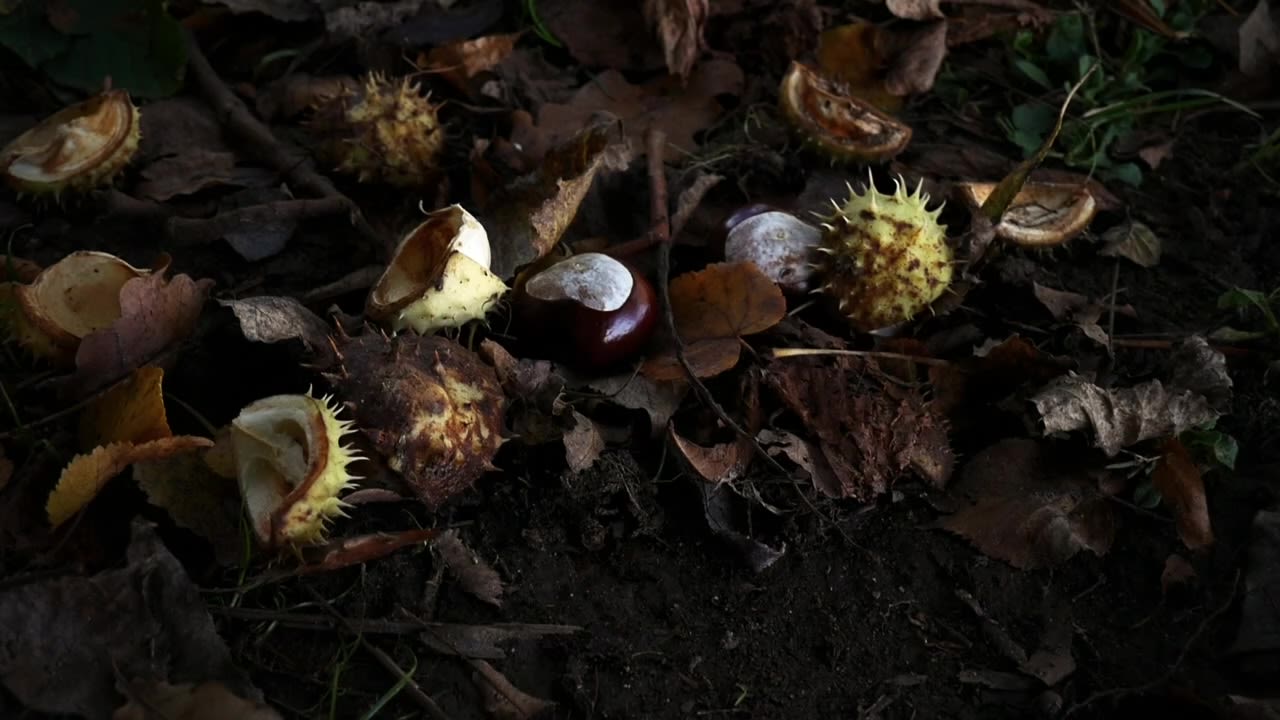
The European Commission's findings are clear: „Soil degradation costs the EU tens of billions of euros every year.“ Two thirds of the continent's soils are considered to be degraded. But while the EU has long since regulated the protection of water and air, there is still no legal agreement for soil. In order to protect its soils better, the EU Commission presented its „Soil Strategy“ in 2021. The goal: „By 2050, all EU soil ecosystems are in healthy condition and are thus more resilient, which will require very decisive changes in this decade.“
In July 2023, the Commission presented its draft for soil protection in Europe. However, there is no longer much left of the once ambitious plan.
In its 2021 strategy, the Commission had explicitly identified pesticide residues and over-fertilization as a „problem of soil contamination“. In the current draft, however, there is no mention of regulating fertilization. The annex merely states: „Fertilization should be based on the needs of the plants and the condition of the soil, depending on the location and time.“ Preference should be given to measures that promote creating humus. What this is supposed to mean specifically remains unclear. The word pesticides only appears once in the entire draft: in the annex, as an example of pollutants whose levels the member states „can“, but do not have to gather. Obligations or sanctions? Not a word.
Caroline Heinzel, Associate Policy Officer for Soil at the European Environmental Bureau (EEB), an umbrella organization of over 180 environmental NGOs in Brussels, has followed the political process closely. In a position paper, she has criticized the Commission's draft in detail. Heinzel says: „Unfortunately, the draft in its current form will not lead to healthy soils in the EU.“ Even the changed title is symptomatic: the Commission had originally announced a Soil Health Law. Instead, however, it has now presented a draft that is intended to regulate the „monitoring“ of soils („Soil Monitoring Law“). The Commission's proposal stipulates that Member States should monitor their soils for five years and collect further data. Five more years lost for consistent soil protection, criticizes soil scientist Andrea Beste.
„One could say that we stand by and watch as our soils die.”
Andrea Beste, agricultural scientist and political advisor
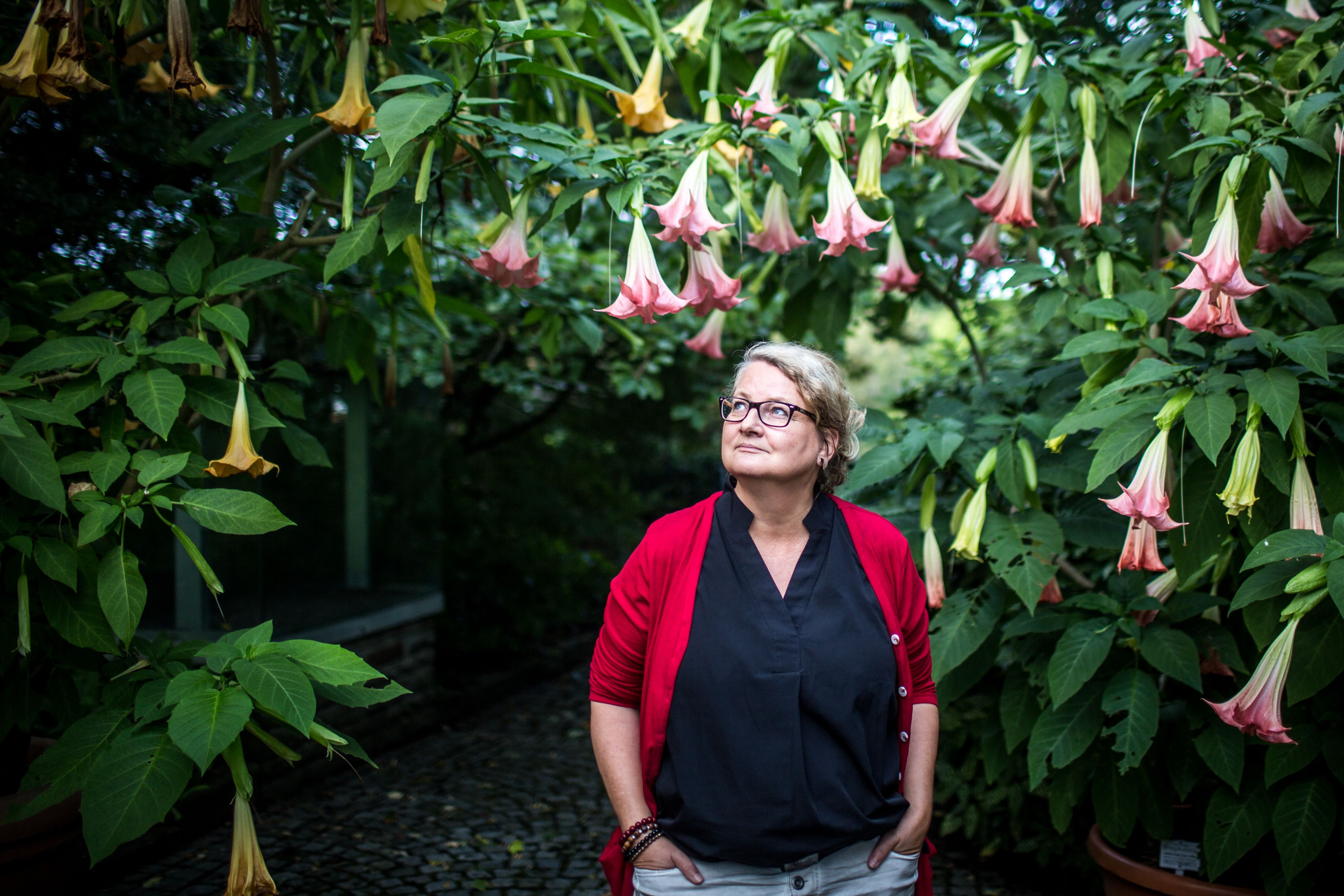
For more than 25 years, Andrea Beste has been traveling the world as a consultant to promote soil protection in agriculture. In Europe alone, she has examined more than 500 arable plots. As an expert, she speaks in federal state parliaments across Germany as well as in the German Bundestag and the EU Parliament. In Brussels, she has prepared several expert reports on EU soil policy for MEP Martin Häusling, the Greens party's agricultural policy spokesperson. Beste believes it is important not to blame the farmers alone for the soil crisis.
The European Court of Auditors has come to the same conclusion. In August, the auditors issued the Common Agricultural Policy (CAP) of the EU member states a damning report. A third of all EU funding still goes to agriculture, with around 55 billion euros to be distributed by 2027. The main beneficiaries are farms with large areas of land. According to the auditors, however, the high agricultural subsidies do not serve to protect the soil. The requirements that the EU countries place on their farmers „hardly require any change in agricultural practices.“ But this criticism falls on deaf ears in Brussels, says Andrea Beste.
Green agriculture or greenwashing?
It was a surprising statement, the like of which the heavyweights of global food system rarely make in public. At the beginning of June, two days after the EU Commission presented its draft soil law, Danone, Nestlé and Unilever declared in a joint press release that „the state of soils in Europe is worrying.“ While the agrochemical industry defends conventional agriculture, the leaders of the food industry warned that the soil-depleting agricultural system would also harm them in the long term. In rare unity with environmental organizations, the companies therefore declared the Commission's plan to be too „unambitious“. They cite studies which point to a connection between the decline in humus content in Europe's arable soils and the stagnating yields of important staple foods. In other words, the soil crisis is jeopardizing their supply of raw materials and thus threatening overall food security.
As a solution, Nestlé is proposing an alternative system of food production in which the company intends to invest more than one billion euros by 2025: „regenerative agriculture“, a form of agriculture that builds up the soil instead of depleting it. Other megacorporations such as Bayer, BASF, Syngenta, PepsiCo, Walmart, Microsoft, Unilever, McDonald's and Cargill have also committed to regenerative agriculture in the past two years, in some cases with promises worth billions.
The key question is: What exactly do the companies mean by this?
„Regenerative agriculture is about biodiversity, water cycles, improved livestock farming and, most importantly, the protection and health of the soils on which we grow our raw materials,“ Nestlé announces on its website. The company goes on to explain that „the way we treat our soils determines whether the soil can absorb a lot or little CO2 from the atmosphere. So if we actively protect our soils, we remove CO2 from the atmosphere.
In summer, Rodrigo Santos, member of Bayer's Board of Management, said: „For us, regenerative agriculture means increasing food production, higher incomes for farmers and greater resilience of farming under changing climate conditions while restoring nature.“ He announced that Bayer „will deliver innovations for regenerative agriculture and thus open up new market potential. Industry-leading innovations will not only increase farmers' yields, but also regenerate soils and minimize the impact of agriculture on the climate and the environment. On the farm of the future, the data collected in the field and the CO2 sequestered in the soil will be just as important to the farmer as the yield.“
Does it all sound strangely familiar? In fact, for Bayer, regenerative agriculture includes the very new business areas in which the Group has invested heavily in recent years: „biological products, biofuels, carbon farming, precision applications and digital platforms and marketplaces.“ This could double the „market potential, which currently amounts to more than one hundred billion euros for the core portfolio.“
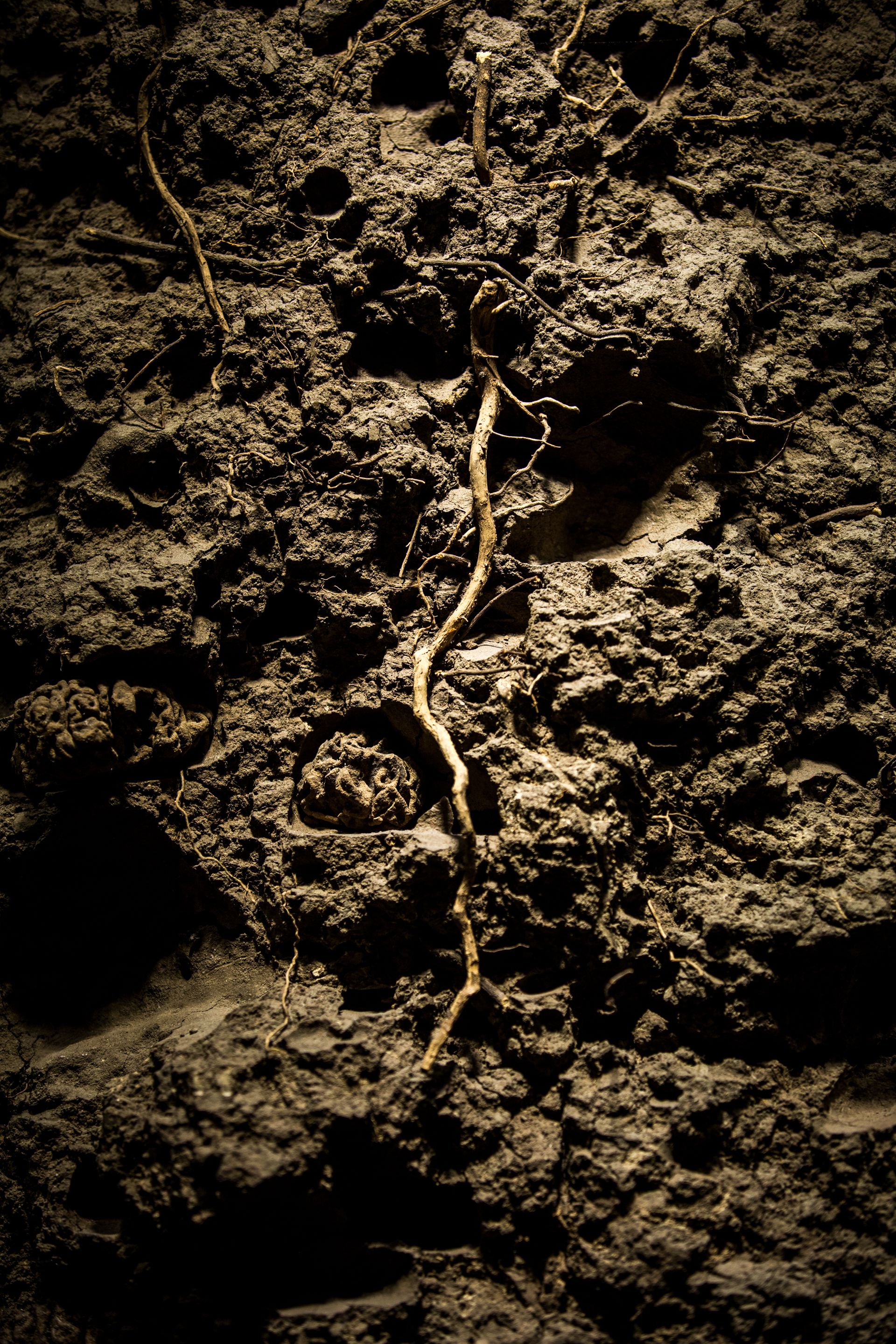
Andrea Beste considers the agricultural industry's commitment to regenerative agriculture „a clear case of greenwashing.“
Bringing nature back
The concept may sound modern but it is actually a return to ancient knowledge. Regenerative agriculture contains elements that were widespread all over the world before the advent of the agricultural industry: In diverse landscapes full of shrubs and trees, meandering rivers, ponds and lakes of various sizes, nature and food production were not separate, but interwoven. The Amazon, for example, which often serves as a symbol of the primeval forest par excellence, is in fact largely the result of centuries of planned transformation by the indigenous population, who extracted timber and integrated particularly desirable varieties of edible or otherwise useful trees. People and their livestock moved within these polycultural forest landscapes. In many areas of the global South, such diverse agricultural systems still play an important role in feeding millions of people today. These are the very systems that were dismissed as unproductive by European colonialists who clear cutted the landscape in order to convert the forests into plantations with the help of the plow.
Central Europe's orchards are also an example of species-rich food production systems. In the course of land consolidation since the mid-fifties of the last century, the small-scale, diverse agricultural landscape was largely destroyed. Farmers received bonuses if they cut down old fruit trees, tore out hedges, filled in ponds and straightened streams into ditches. The premise was to create space for the ever larger machines in order to maximize yields. The soil suffered as a result.
Since the 1980s, more and more people around the world have been trying to bring all these cleared elements back into the monotonous agricultural landscape. Their aim is to breathe new life into degraded soils – and ultimately to regenerate the entire landscape.
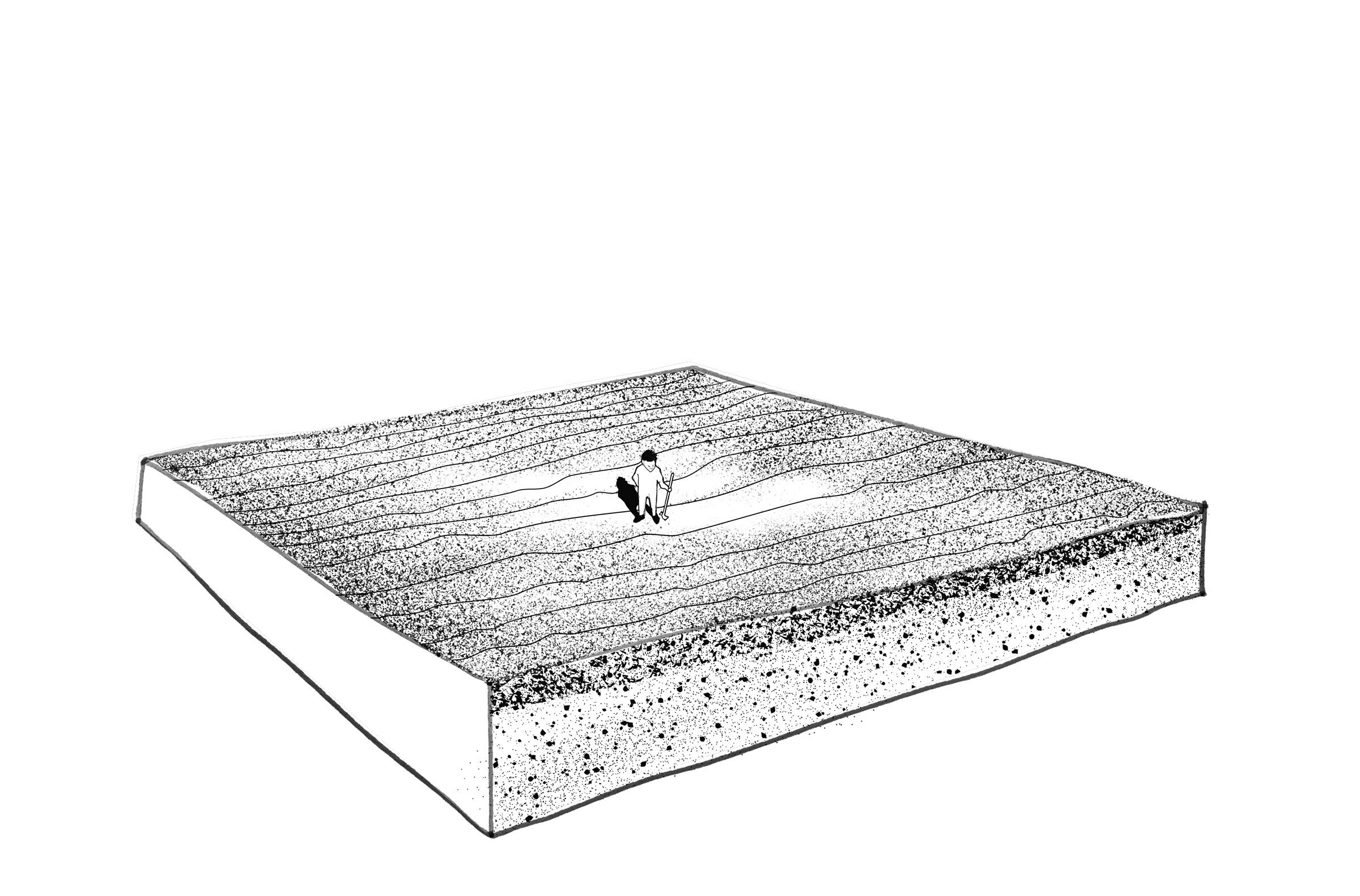
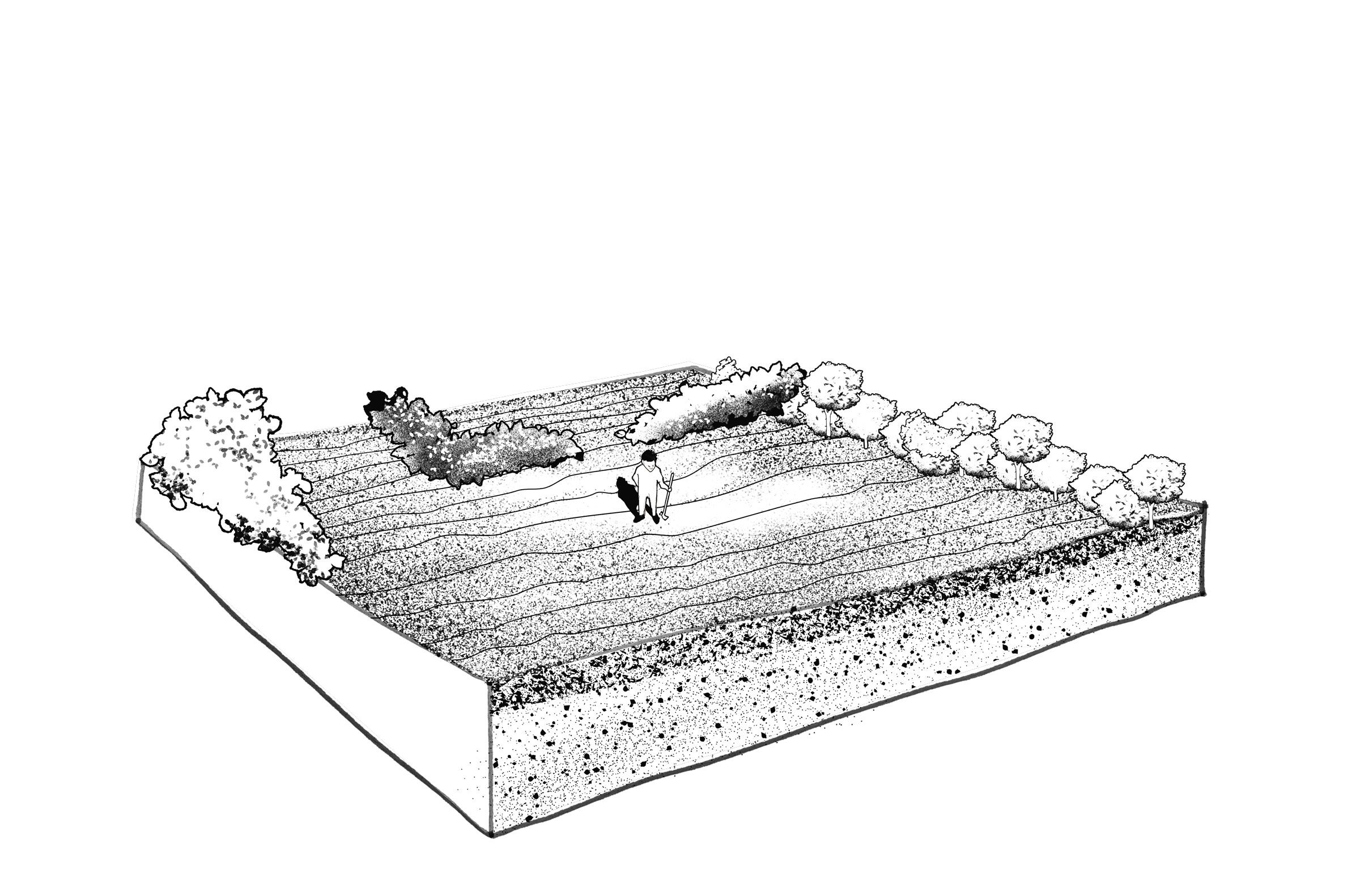
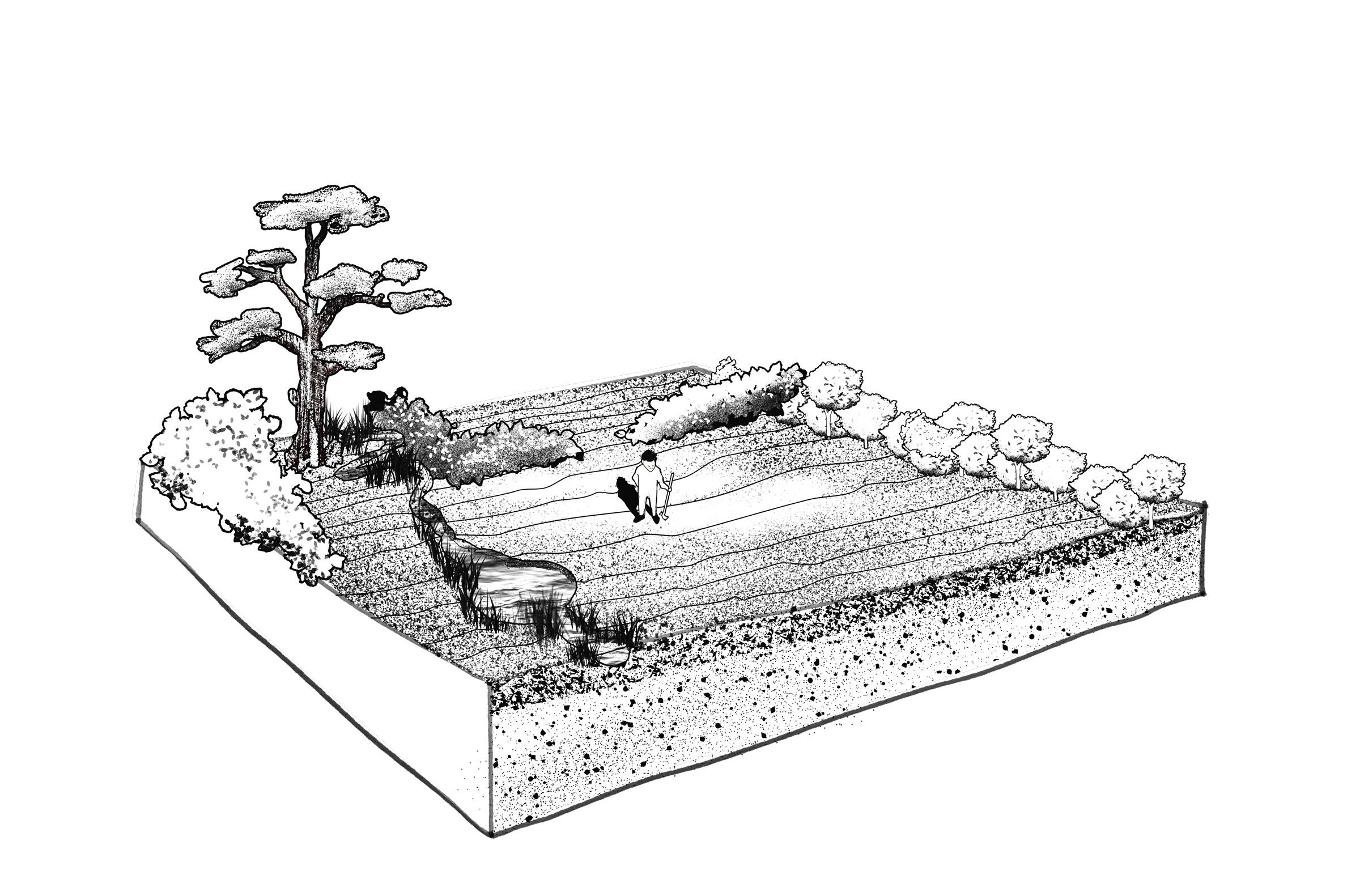
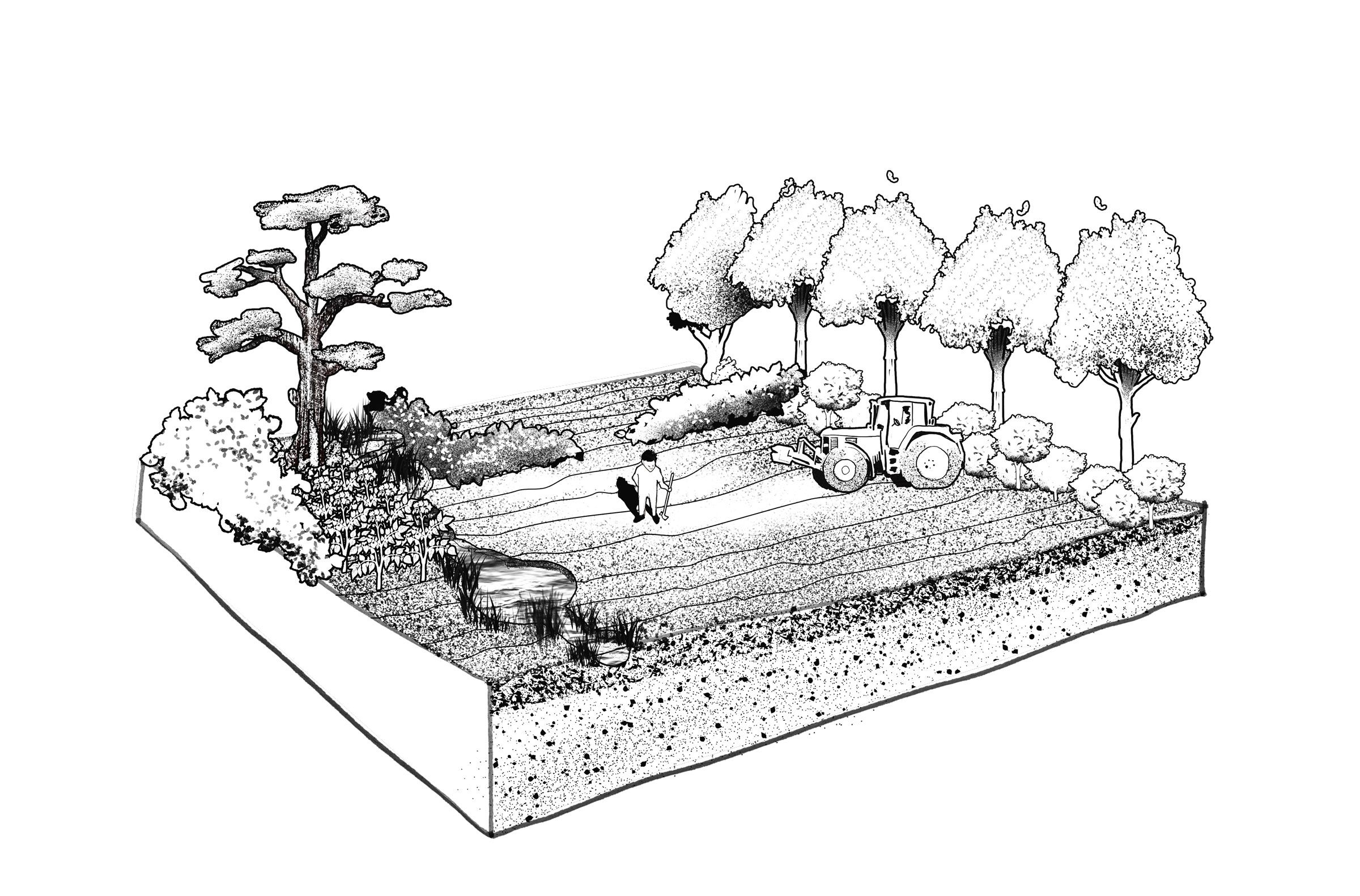
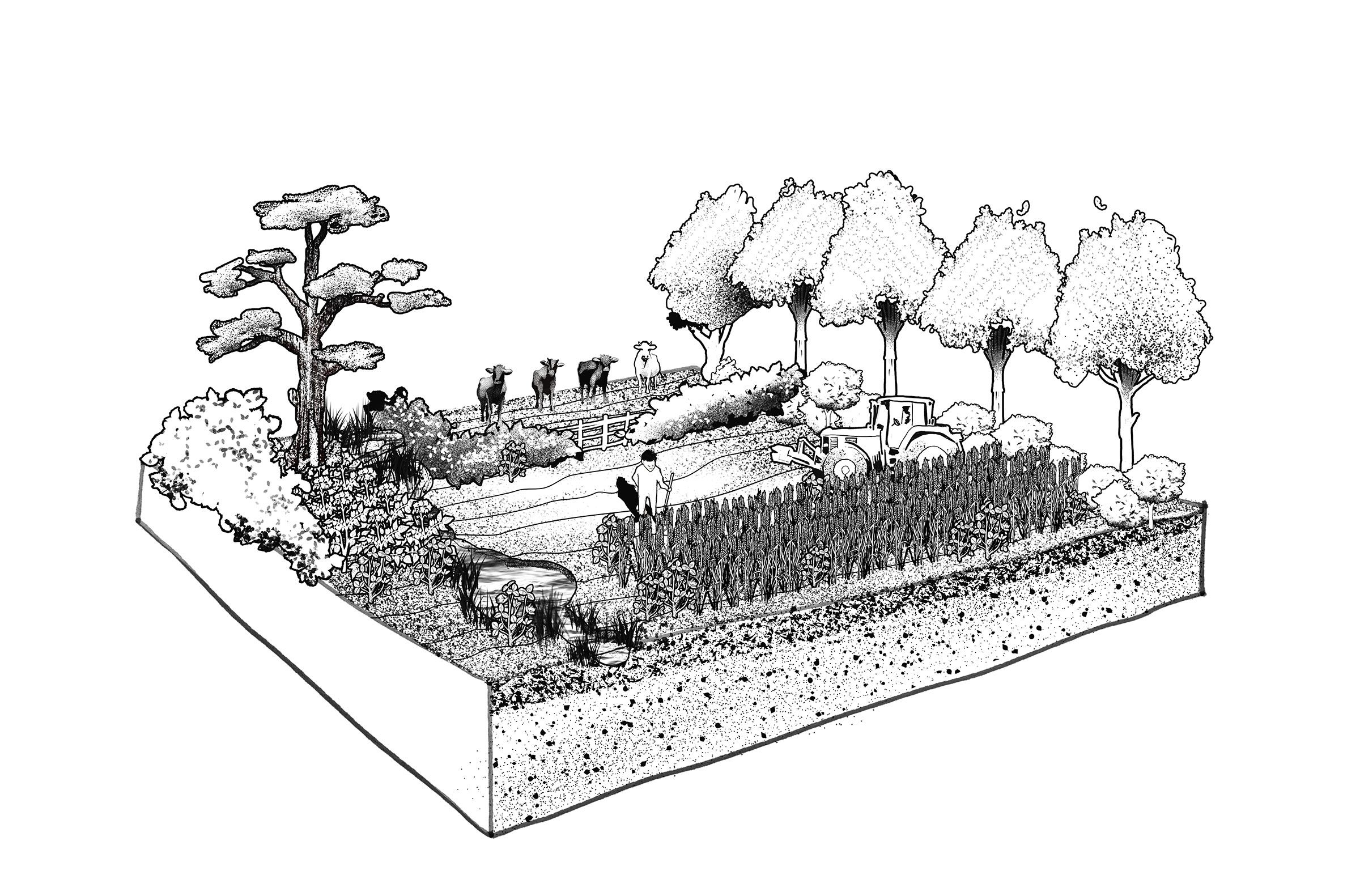
How can agriculture and nature be reconciled?
Hedges provide a habitat for numerous animal species. They slow down the wind and thus erosion.
Ponds, pools, streams and rivers are true hotspots of biodiversity. They also ensure a balanced water balance in the soil.
Trees provide shade and cooling, at night they keep the warmth of the day in the field.
Animal husbandry and arable farming come back together again and complement each other, ideally creating closed nutrient cycles.
Organic sector and regenerative farmers in dispute
„In Germany, there is no widespread label or certification for regenerative agriculture,“ according to a study published in March 2023 by environmental NGO NABU in collaboration with the Boston Consulting Group, entitled „The path to regenerative agriculture in Germany – and beyond“. The authors come to the conclusion that a nationwide switch to regenerative farming methods would bring „considerable benefits for farms and downstream food companies as well as for the entire socio-ecological context – both in economic terms and in terms of the health and well-being of the country.“ The following sentence is particularly interesting: „This can be achieved without burdening consumers through price increases or premiums and does not require the introduction of labels.“
In the USA, on the other hand, various labels have been given to products from regenerative agriculture for several years now. The first of these was the „regenerative organic certified“ label in 2017. The basic requirement for this certification is compliance with the US organic standard. However, the certified farms want to extend this standard, not only to include more far-reaching ecological obligations such as no tillage, but also social criteria such as fair pay for their employees. The idea is therefore a kind of organic plus.
The still small but growing scene of regenerative farmers in Europe is divided on the question of what purpose another label might serve. At the end of 2023, an alliance of more than fifty regenerative farmers from all over Europe gathered to pool their political interests: the European Alliance for Regenerative Agriculture, or EARA for short, was born. Its spokesperson Simon Krämer, who was also involved in the NABU study, says in an interview with Greenpeace Magazine that EARA is not aiming for a new label of its own: „We don't want to reinvent the wheel. Our focus is on structural changes in agricultural policy.“ Krämer sees the US „regenified“ label as a model, which he believes could also be used in Europe. What's special about this certification is that the participating farms do not have to be strictly organic to receive it; conventional farms can also work under the label, which is awarded in various grades. Conventional farmers are also explicitly welcome at EARA. What is crucial, according to Krämer, is that the farmers have set out „on the path to regeneration.“
At the UN Climate Change Conference in Dubai, EARA presented its approach in a position paper which states: „While synthetic pesticides may be used initially or in certain contexts, the focus is on drastically reducing conventional use through an ambitious and context-specific phasing-out approach. The desired outcome is primarily ecological health through improved soil health, in this case possibly measured as a trend in total toxicity load per hectare/yield and/or soil biodiversity.“ The reasoning sounds plausible: instead of just optimizing the small organic niche, the aim should be to take the vast majority of conventional farms along on the path to regenerative agriculture. This is the much greater lever for systematic change.
The organic sector has a very different view of its new competitors. „The agricultural methods that ‘regenerative agriculture’ addresses are part of the tried and tested tools of organic farming. But 'regenerative agriculture' does not use a clearly defined set of goals and measures, there is a lack of regulations and monitoring systems, as well as political programs and support measures.“ This is the view of the supermarket chain Alnatura, which sells products under various organic labels. Its statement, published in 2023, continues as follows: „If representatives of agriculture and nature conservation or civil society speak out in favor of ‘regenerative agriculture’ in an undifferentiated manner, this is harmful to organic farming. It blurs the clear profile of organic farming, confuses consumers and policy makers alike and unfairly distorts competition on the food market.“ And in a letter to the editor of Greenpeace Magazine, „Naturland“ President Hubert Heigel even claims that „regenerative is often just another buzzword in the broad spectrum of greenwashing.“
The dispute between certified organic farmers on the one hand and self-proclaimed regenerative farmers on the other is far from settled. What is certain, however, is that regenerative agriculture provides important impetus for the organic production of food.
„When we look at nature, we don't find monoculture anywhere.“
Maria Giménez, regenerative farmer in Brandenburg
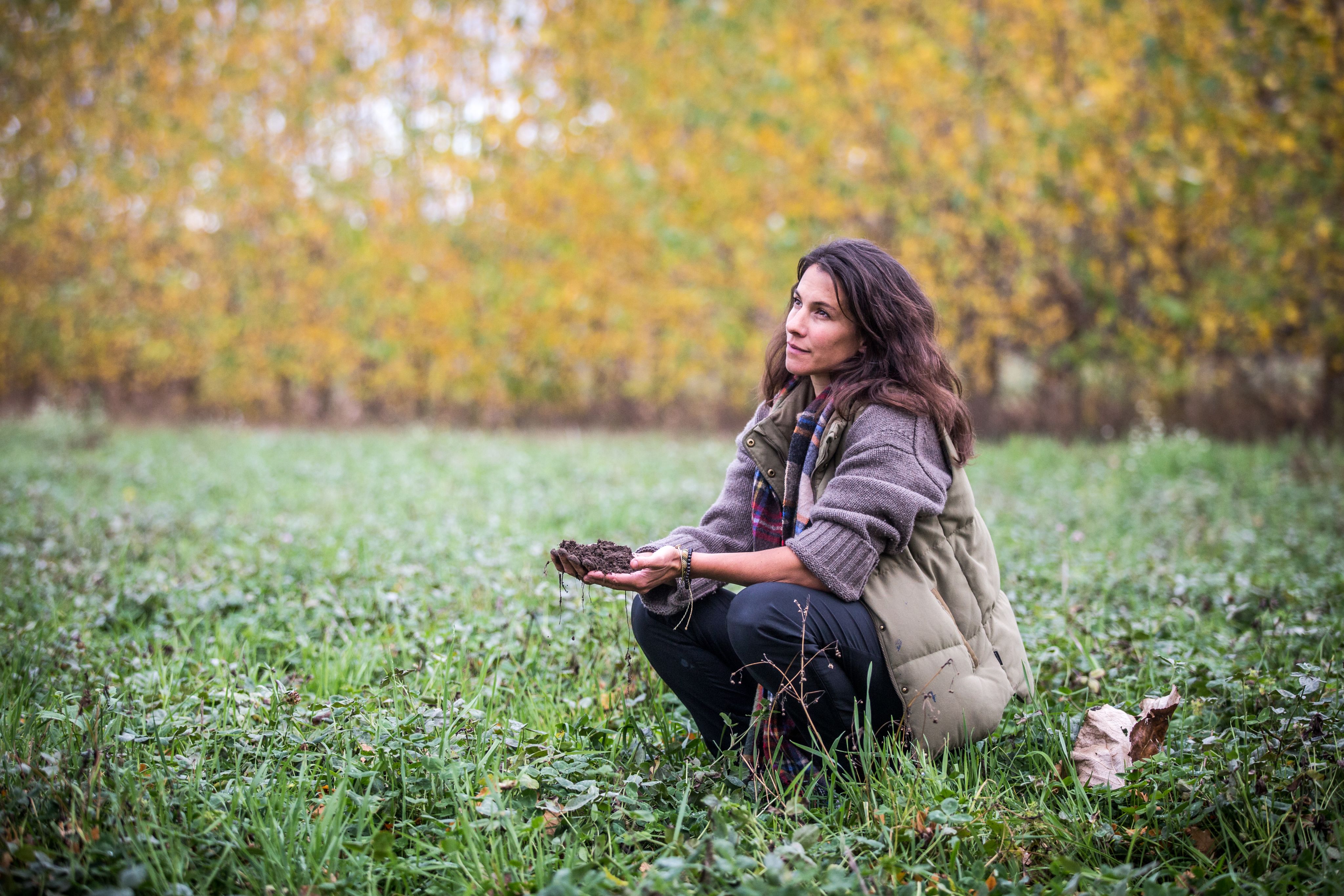
One of the pioneers of regenerative agriculture in Germany is Maria Giménez. She made a career as an artist – until she stumbled into farming by chance. Her wealthy father-in-law had acquired a lot of land in Brandenburg after reunification. When the leases with the large farmers expired, he presented Maria with a decision that would change her life: he offered her the land to farm, 360 hectares of arable fields and forest. Maria accepted the offer. Over the past eight years, what started as a small vegetable garden for markets in Berlin has developed into a model farm for regenerative agriculture .
Maria Giménez divided the arable land into narrow strips of thirty meters, adapted to the working widths of her machines. She planted trees in between. Lots of trees. There are now more than 200,000 trees of 45 different species in her fields and pastures. The concept is called agroforestry, the integration of woody plants into arable farming. The idea: trees provide shade and slow down the wind. In this way, they prevent erosion. Their foliage nourishes soil life and useful fungi settle on their roots. All this strengthens the cereal plants, sunflowers and all the other arable crops that she grows between the rows of trees. „Around the world, agroforestry systems have been shown to be significantly more productive than growing just one crop on the same area,“ explains Giménez. In fact, studies have shown that the yields of the main crop – such as wheat – can be higher if they are surrounded by, for instance, walnut trees. In many cases, farmers harvest more grain, even though the area under cultivation is reduced by the rows of trees. And the trees and shrubs provide additional sources of income. Their fruit, berries, nuts and wood can also be marketed.
In the tropics, where trees provide much-needed shade and cooling, agroforestry systems are also widespread in commercial cultivation, for example coffee bushes under fast-growing eucalyptus for paper production. For Africa, researchers speak of a „win-win situation“. For the northern hemisphere, where less sunlight is available, studies have come to different conclusions: It is true that even in sunny southern Europe, crop yields are initially reduced minimally in most cases, precisely because the area under cultivation for the main crop has been reduced. However, polyculture cultivation can help to keep crop yields stable, especially in times of increasing climate extremes. In many cases, the quality of the produce also increases. And over time, the yield level evens out again – especially as soon as the trees and shrubs also produce their first harvests. An evaluation of yields from agroforestry systems in Brandenburg and Saxony-Anhalt „confirms the greater efficiency of agroforestry systems compared to monocultures.“ In Europe, most agroforestry systems are still quite young, apart from a few established flagship projects. Researchers emphasize that time is needed to comprehensively evaluate their efficiency – and a broader view that takes into account factors such as biodiversity, water storage and climate resilience in addition to crop yields.
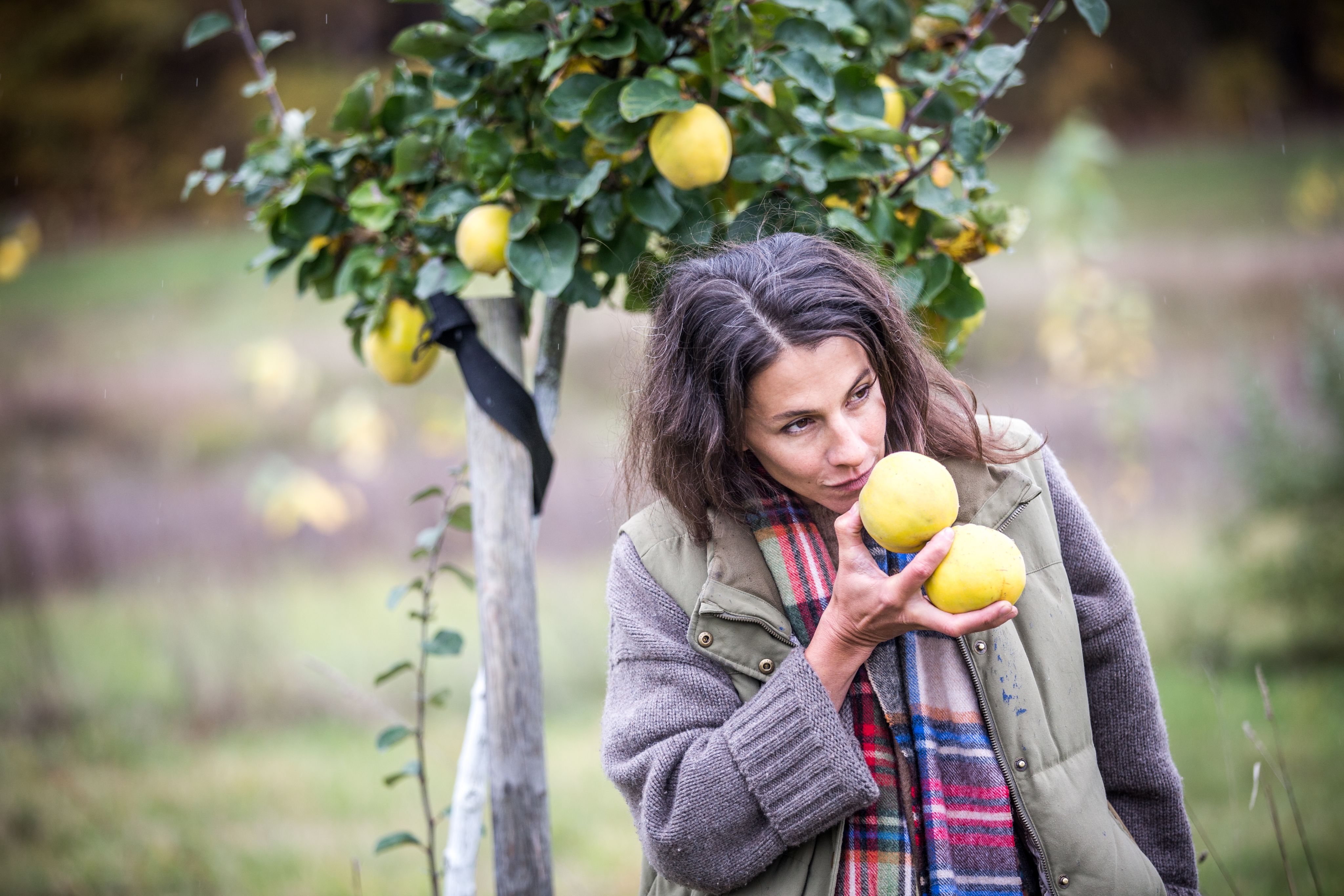
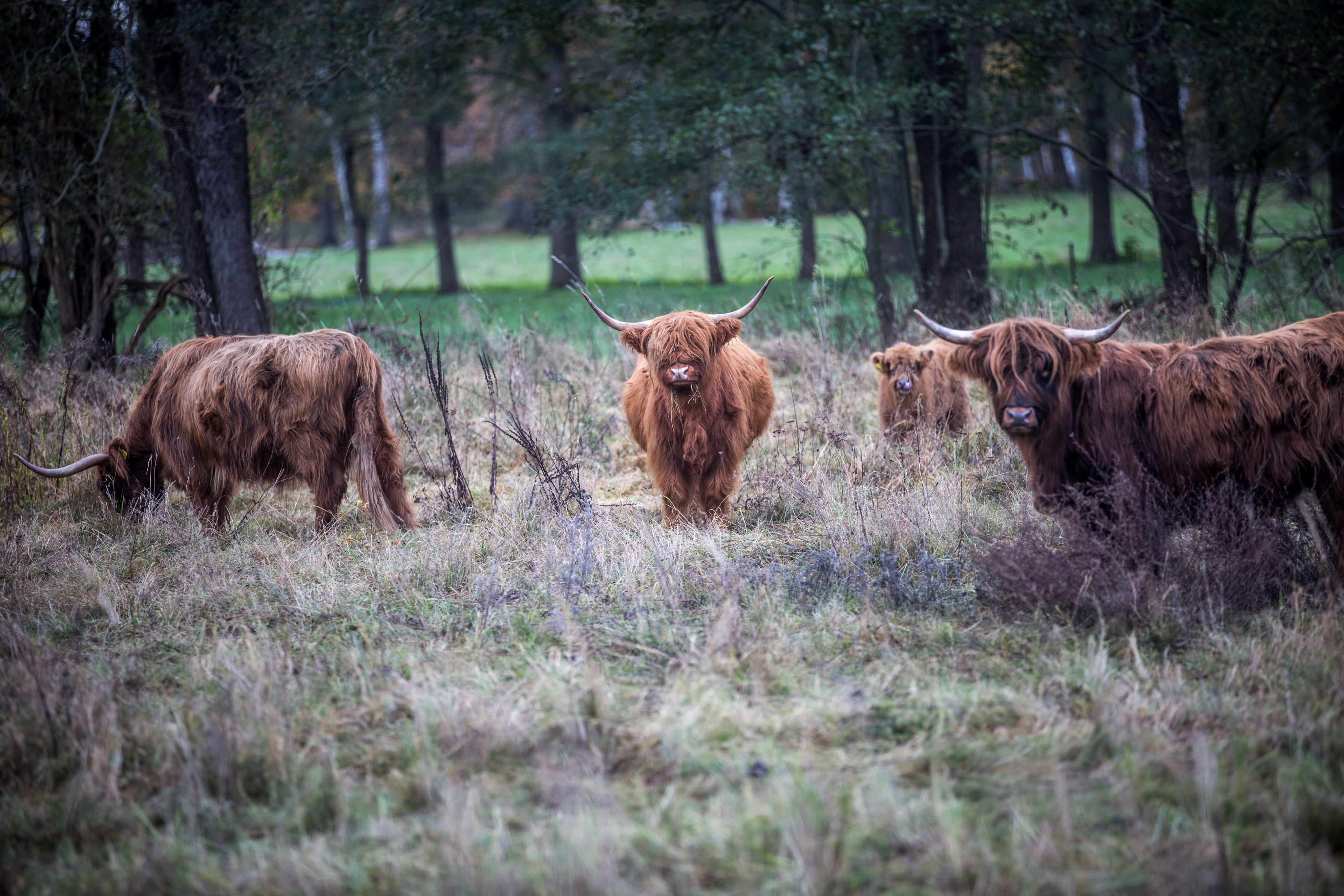
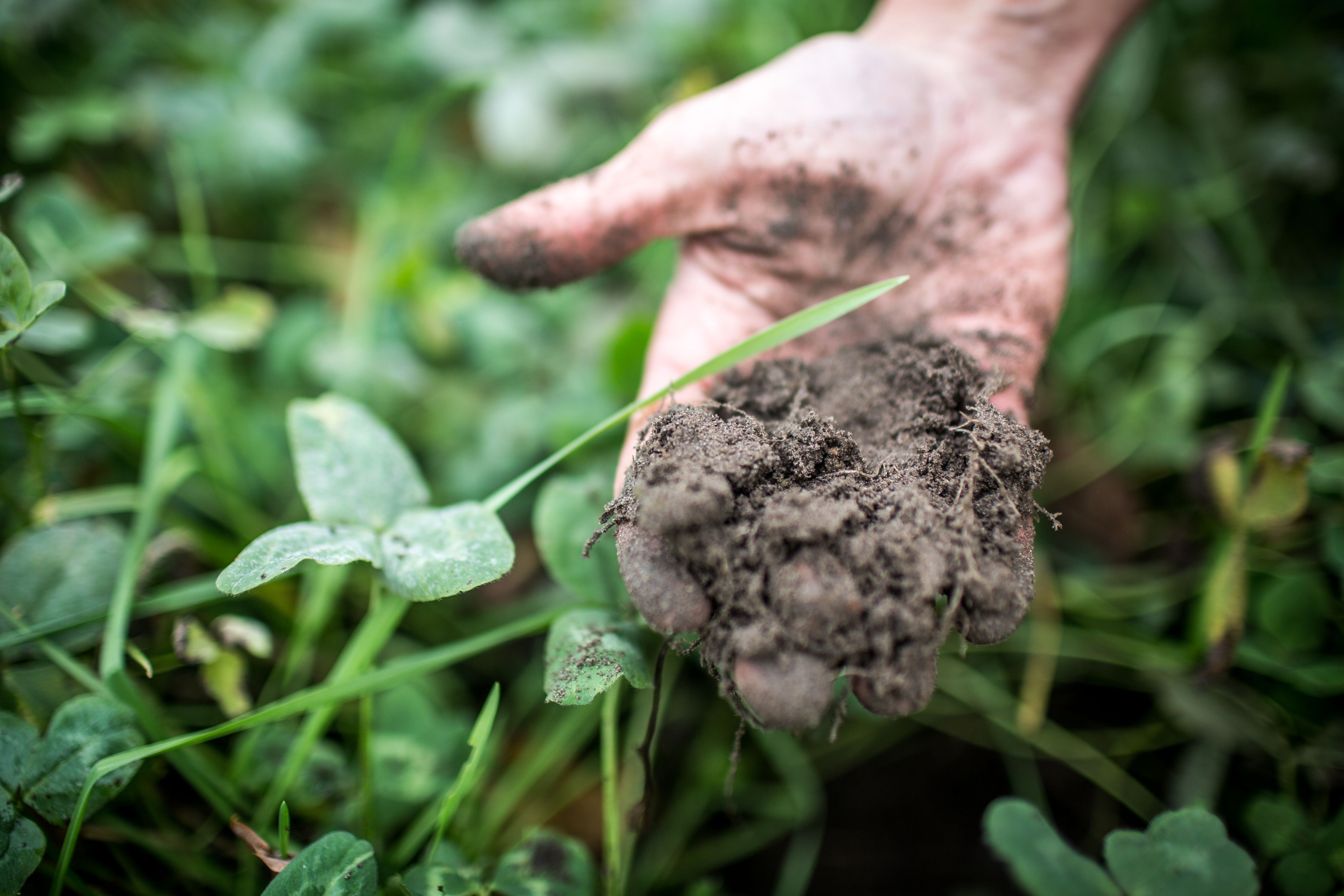
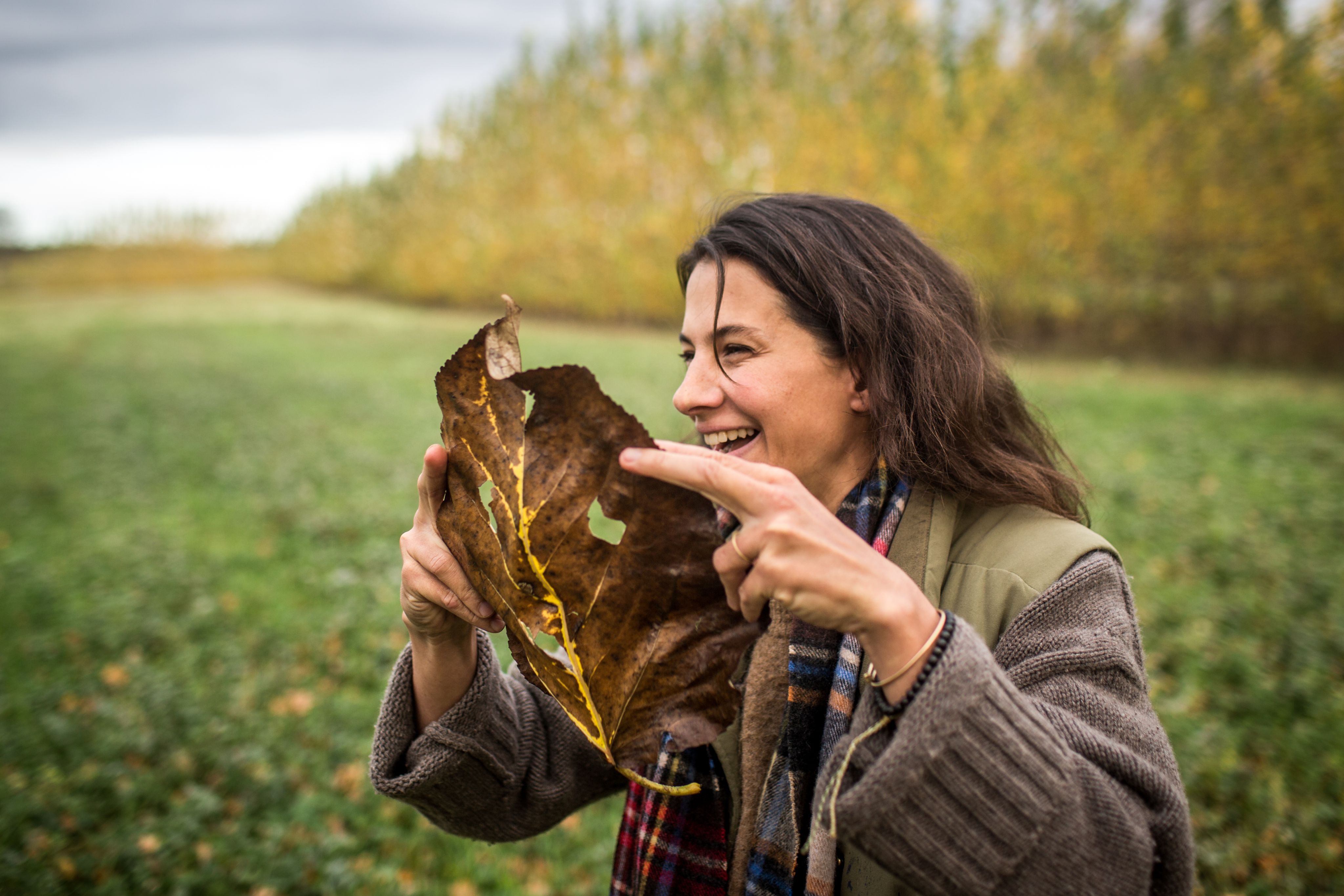
Ultimately, it also depends on how the farmers cultivate the soil between their trees. Maria Giménez, for example, also farms without mechanical tillage. Her cattle takes care of the soil. In the fall, after the harvest, Giménez sends her herd of forty Scottish Highland cattle across the fields. In this year-round, rotational grazing system, the supposed climate killers once again become the humus-building nutrient converters that they naturally are. The veterinarian and former author of the World Agriculture Report, Anita Idel, has impressively described the outstanding role of ruminants such as cattle for soil health. At Maria Gimenéz' farm, the cattle eats grasses and herbs, fertilizes the land with their excrements and prepares the soil for the following sowing with their hooves.
Giménez imported the seed drill for the subsequent direct sowing from Brazil – a tip from her colleague Mark Dümichen, whose farm is not far away. She often exchanges ideas with him. „Everything I know about regenerative agriculture, I know from other farms that have set up and found out: 'We can't continue the way we are treating our soil,'“ says Giménez. „This movement of farms that work regeneratively and are embarking on this new path is a wonderful movement from the underground. And this movement is global. It's getting bigger and bigger now.“
Walking with Maria Giménez along the ponds and hedges she has created, watching the cattle grazing in the pasture and the fruit ripening, you can get an idea of what sustainable agriculture might look like in the future. It has already become reality here, the vision of a farming system that puts the soil and biodiversity back at the center. A farming system that creates positive effects far beyond the edge of the field, transforming a drought-stricken region into a climate-resilient landscape. A farming system that produces food and does not pollute water and the climate, but protects them. A farming system that can actually be part of the solution.
Contents
Chapter I
Losing Ground
Preserving soils is not only key in the fight against hunger. Healthy soils also help us to brace the climate crisis, droughts and floodings as well as the mass extinction of species.
Chapter II
Worn out
The plough and artificial fertilizers drastically increased yields, but they have long devastated the Earth. In the age of the soil crisis, we need to rethink agriculture from the ground up.
Chapter III
Green Revolution 2.0
Genetically modified soil microbes, the „intelligent field“ and dubious CO2 certificates: the agricultural industry has discovered soil as a product. Meanwhile scientists unearth the true scale of contamination in our soils.
Chapter IV
Regenerated
The agrochemical industry is eager to avoid restrictions to its farming model, politics are postponing soil protection. Against all odds, the soil-building agriculture of the future already takes shape on more and more fields.
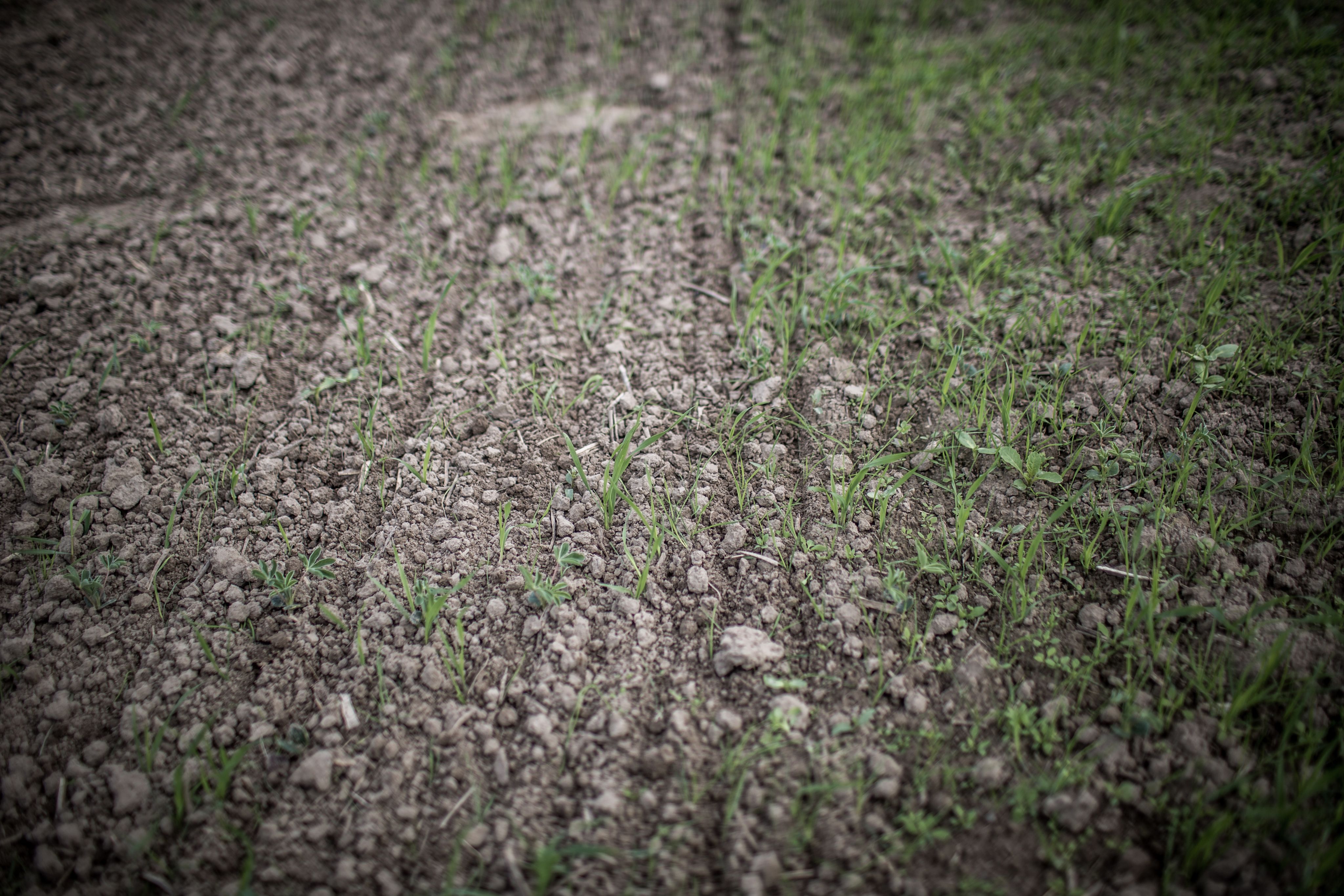
by Marius Münstermann
videos & photos Christian Werner
illustrations Erik Tuckow
editor Wolfgang Hassenstein

Recommended books, podcasts, films & organizations
Jared Diamond - Collapse. How Societies Choose to Fail or Succeed
European Alliance for Regenerative Agriculture (EARA)
European Land and Soil Alliance (ELSA)
Food and Agricultural Organisation of the United Nations (FAO) - Status of the World's Soil Resources (2015)
Life in the Soil - Podcast produced by the FU Berlin's Institute for Biology
David R. Montgomery - Dirt. The Erosion of Civilisations
No-Till Growers - YouTube channel about regenerative farming
Pesticide Atlas - Facts and figures about toxic chemicals in agriculture
Joshua Tickell, Rebecca Harrell - Kiss the Ground (documnetary)
Music used under Creative Commons licences
Betelgeuse - Kunal Shingade
Golden Hour - Lakey Inspired
Filaments - Scott Buckley
Dub Trippin - MK2
Reloaded - Savfk
The Dreamer - Lakey Inspired
The Uprising - Arthur Vyncke
Uncertainty - Arthur Vyncke
Ethereal - Punch Deck
Supported by a fellowship of the

Additional footage has been provided by
BASF - BASF Archive
Bayer CropScience
Julian Chollet, Gesellschaft für mikroBIOMIK e.V.
Deutsches Zentrum für integrative Biodiversitätsforschung / TRICKLABOR
Rolf Derpsch
depositphotos.com
Mark Dümichen, "Wir mögen es grün"
EU Soil Observatory
fortepan.hu / Veszprém Megyei Levéltár/Klauszer
Maria Giménez, Wilmas Gärten
Helmholtz-Zentrum für Umweltforschung
International Maize and Wheat Improvement Center (CIMMYT)
André Künzelmann/Helmholtz-Zentrum für Umweltforschung UFZ
Dorothea Lange / Library of Congress
Ellen Larsson, R. Henrik Nilsson, Erik Kristiansson, Martin Ryberg, Karl-Henrik Larsson: Approaching the taxonomic affiliation of unidentified sequences in public databases – an example from the mycorrhizal fungi". BMC Bioinformatics
Martin Leick
Ignacio Romero Lozano, Forschungsinstitut für biologischen Landbau (FiBL)
Kevin McElvaney
Miguel Á. Padriñán
Pestizid-Atlas 2022 / Umweltinstitut München e.V.
pexels.com
picture alliance / ASSOCIATED PRESS (portrait photo of Norman Borlaug)
pixabay.com
Photograph from 1892 of a pile of American bison skulls
Robert Thompson, University of Reading
Netherlands Institute for Sound and Vision

